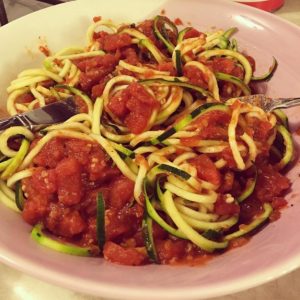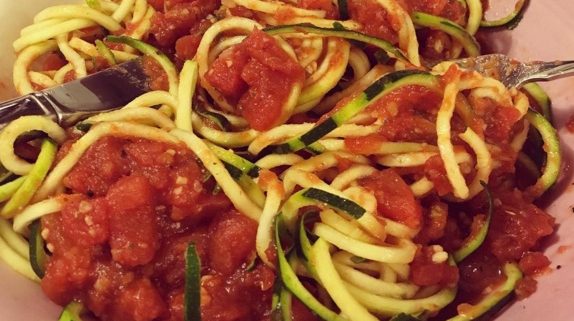National Sauce Month
 March is National Sauce Month which makes this the perfect time to explore new sauces and flavors. I personally love trying new sauces all the time. Sauce can be used to add new flavors and textures to dishes you are already enjoy. However, it is important to be very mindful when choosing sauces.
March is National Sauce Month which makes this the perfect time to explore new sauces and flavors. I personally love trying new sauces all the time. Sauce can be used to add new flavors and textures to dishes you are already enjoy. However, it is important to be very mindful when choosing sauces.
The best part about sauces are the many different types. Sauces can be thin, thick or semi-solid. They can also be savory, sweet, sour, or sweet-and-sour. You get to choose how you want your sauce, and you can make it different every time!
Homemade Mother Sauces
There are 5 “mother sauces” that are the building blocks of all sauces. These sauces came from France and can be used as a base and then you can modify accordingly.
Four out of the five sauces start with a roux, which is a fancy way of saying equal parts flour mixed with fat. The fifth sauce uses emulsification, which is the act of using a binding agent (i.e. egg yolk) to mix two products that don’t normally mix well together.
Here is a quick breakdown of the 5 mother sauces:
- Béchamel: roux + dairy, such as milk or cream. This becomes a rich, creamy sauce; think mac & cheese!
- Velouté: roux + a white stock, either chicken, vegetable or fish stock. Technically this is not a finished sauce, it’s used as a flavorful starting point for gravies, mushroom sauces, and shrimp sauce.
- Espagnole: roux + a brown stock, either beef or veal stock. This sauce is also known as a brown sauce and can be served as a glaze over foods.
- Tomato: roux + tomatoes. However, you can also do this the Italian way and skip the roux by doing a tomato reduction to build flavor and thickness. Onions and garlic are typically added for more flavor.
- Hollandaise: egg yolks + clarified melted butter + acid, such as lemon juice or white wine. This sauce takes time and patience because you want to make sure the eggs do not curdle. You usually find this on eggs benedict or drizzled on top of vegetables.
Making a homemade sauce can be intimidating, but worth it in the end. Once you make it once, it’ll get easier each time.
The best part of homemade sauces? You don’t have to make it the same way each time! Homemade sauces allow you to get creative with flavor and texture, you can add your favorite seasonings and try new combinations.
“Lighter” Sauces
Most pastas come topped with thick, creamy sauces, but sometimes you want to opt for something “lighter”. Lighter sauces still add a ton of flavor, but keeps the dish from “sitting in your stomach” long after you’ve eaten it.
- Garlic and oil. Combine garlic, extra-virgin olive oil and seasonings in a large skillet. Warm the mixture over low heat, stirring occasionally, until the garlic softens, about 8 minutes.
- Pesto. Combine basil, walnuts (or pine nuts) Parmigiano-Reggiano cheese, extra-virgin olive oil, water, garlic, dash of salt and pepper in a food processor. Pulse a few times, then process until it is fairly smooth. This sauce can be high calorie, but you do not need to add very much to your dish. A small amount packs a lot of flavor!
- White wine and broth. Start by sautéing onions, stir in broth, white wine, and white wine vinegar. Bring this to a boil and cook until reduced, about 5 minutes.
Unfortunately, there will be times when you just don’t have the time to make a sauce from scratch. This is when canned or jarred sauces can come in handy. However, it’s important to pay attention to the nutrition label on canned sauces and check for added sodium, sugar and fat. Look for a sauce that has no added sugar and is low in sodium.
Now that you know what sauce you want, don’t forget about the type of pasta it’ll go on top of. Opt for whole grain pasta for the fiber, vitamins and minerals. You can also make zoodles for a fun take on your favorite pasta dish (Learn more here)!
Your Turn to Take Action: What’s your favorite type of sauce? What new sauce will you incorporate this week? Let me know in the comments below!


Leave a Reply
Want to join the discussion?Feel free to contribute!